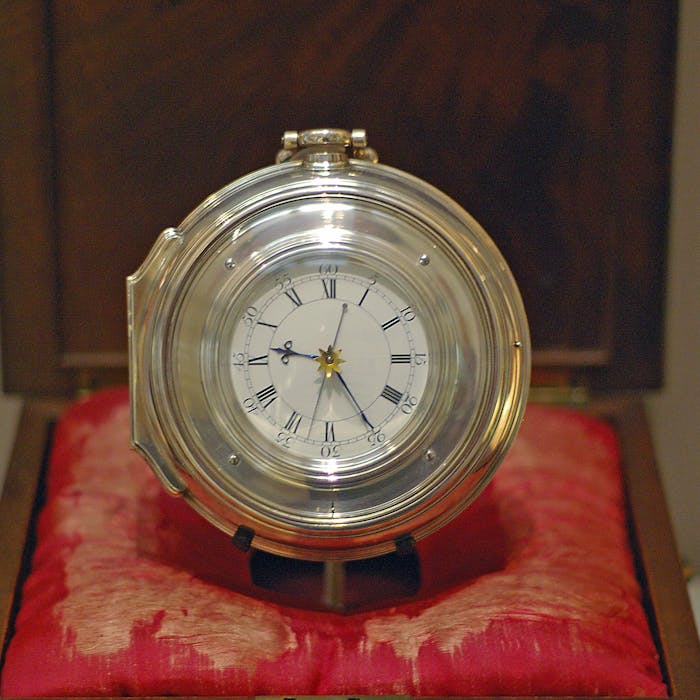
The Marine Chronometer - John Harrison's perfect timepiece
Once international trade began to flourish in the Age of Sail from the 16th century, a problem with navigation became pressing. Latitude (a ship's north-south position relative to the poles and the equator) could be reasonably determined by skilled navigators using a sextant, but longitude (the relative position east to west) was much more difficult.
In 1714, the British government announced a £20,000 prize – worth almost £3m today – for anyone who could solve the problem.
What was needed was an extremely accurate and reliable timepiece on board, set to the benchmark Greenwich Mean Time, which could tell you how much time had elapsed on a journey. No such reliable clock then existed. If a clock was off by only a few minutes per week, it would throw the navigator’s calculations off by hundreds of miles!
Yorkshire carpenter and clockmaker John Harrison devoted his life to the task of achieving the necessary accuracy. To do this, he created his “sea watch” in 1761, finally getting his prize reward in 1773, when he was 80.
His challenge was in producing a clock that was not affected by variations in temperature, pressure or humidity, remained accurate over long time intervals, resisted corrosion in salt air, and was able to function on board a constantly-moving ship. Many scientists, including Isaac Newton and Christiaan Huygens, doubted that such a clock could ever be built.
Harrison actually submitted a project in 1730, and in 1735 completed a clock based on a pair of counter-oscillating weighted beams connected by springs whose motion was not influenced by gravity or the motion of a ship. His first two sea timepieces H1 and H2 (completed in 1741) used this system, but he realised that they had a fundamental sensitivity to centrifugal force, which meant that they could never be accurate enough at sea. His third machine, in 1759, included novel circular balances and the invention of the bi-metallic strip and caged roller bearings, but H3's circular balances still proved too inaccurate.
Harrison finally solved the precision problems with his much smaller H4 chronometer design in 1761., which looked much like a large five-inch (12 cm) diameter pocket watch. His design used a fast-beating balance wheel controlled by a temperature-compensated spiral spring. In 1767, the Board of Longitude published a description of his work in The Principles of Mr. Harrison's time-keeper.
Harrison’s “sea watches” were initially expensive – about 30% of a ship’s cost. Captain James Cook took one on his second and third voyages, and his log was full of praise for the watch. Captain Bligh of the Bounty had one as well. Fletcher Christian took it to Pitcairn Island after the infamous mutiny, and it eventually found its way back to the National Maritime Museum in London. There's also one in the Science Museum.
Further reading
Links to external websites are not maintained by Bite Sized Britain. They are provided to give users access to additional information. Bite Sized Britain is not responsible for the content of these external websites.
